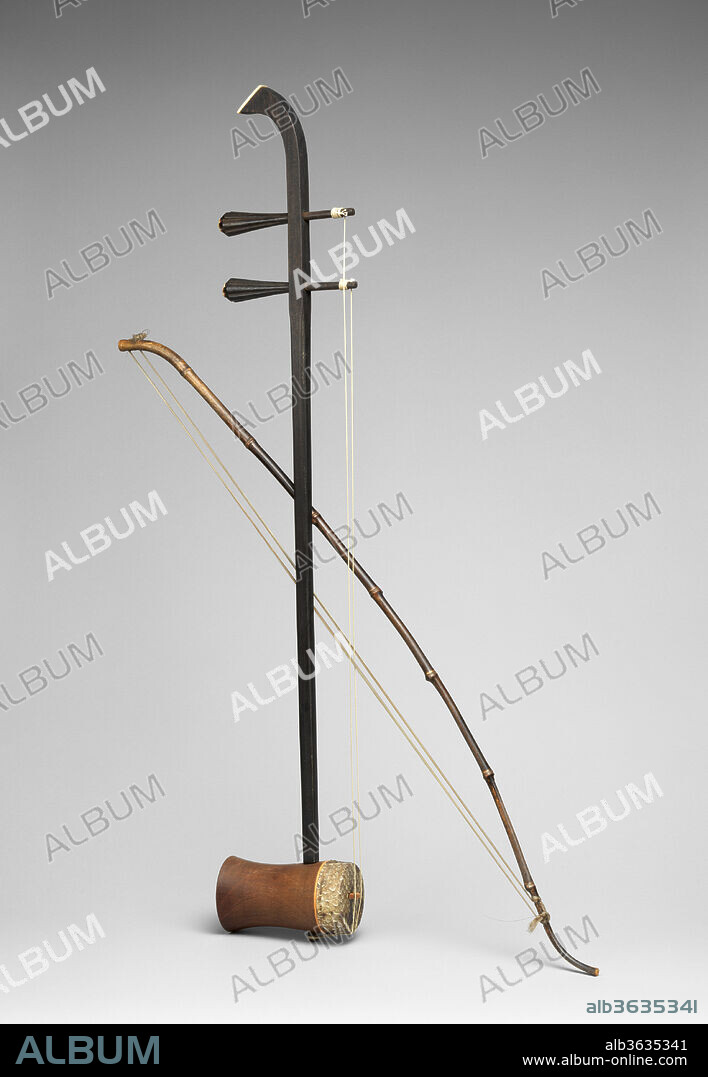alb3635341
Erhu

|
Add to another lightbox |
|
Add to another lightbox |



Title:
Erhu
Caption:
Erhu ( ?? ). Culture: Chinese. Dimensions: Height: 29 15/16 in. (76 cm)
Depth: 4 5/8 in. (11.8 cm)
Diameter (Of belly): 2 7/16 in. (6.2 cm). Date: 19th century.
Two-stringed fiddles (huqin) were introduced into China by nomadic Mongols during the Yuan dynasty (1280-1368). (The presence of "hu" in the name of an instrument indicates that it was a foreign import.) Bow hairs passing between the huqin's strings may reflect the Mongol's need to secure the bow to his instrument while on horseback. Huqin are played vertically on the knee, fingered with the left hand and bowed with the right. In earlier times, there existed a greater variety of local fiddles, but today, as with the European family of violins, certain standard sizes prevail.
Although this nineteenth-century example has an hourglass-shaped body, the erhu more typically has a round or hexagonal sound box and a snakeskin belly. It is heard in traditional ensembles, modern orchestras, and solo performances. In the opera, it either doubles the melody of a higher-pitched fiddle (jinghu) an octave lower or accompanies female roles. In southern China and Taiwan, it is known as the nanhu.
Technique/material:
Wood, python skin, cane, gut
Period:
Qing dynasty (1644-1911)
Museum:
Metropolitan Museum of Art, New York, USA
Credit:
Album / Metropolitan Museum of Art, NY
Releases:
Model: No - Property: No
Rights questions?
Rights questions?
Image size:
3043 x 4400 px | 38.3 MB
Print size:
25.8 x 37.3 cm | 10.1 x 14.7 in (300 dpi)
Keywords:
ASIA • CANA • CANE • CHINA • CHORDOPHONE-LUTE-BOWED-UNFRETTED • CHORDOPHONES • ERHU • LUTES • METROPOLITAN MUSEUM OF ART, NEW YORK, USA • MUSIC INSTRUMENTS • MUSICAL INSTRUMENTS • MUSICAL_INSTRUMENTS • QING DYNASTY (1644-1911) • REED (GRASS) • REED • REEDS • RUSHES • SCOUT • SPIKE FIDDLES • WOOD, PYTHON SKIN, CANE, GUT
 Pinterest
Pinterest Twitter
Twitter Facebook
Facebook Copy link
Copy link Email
Email

